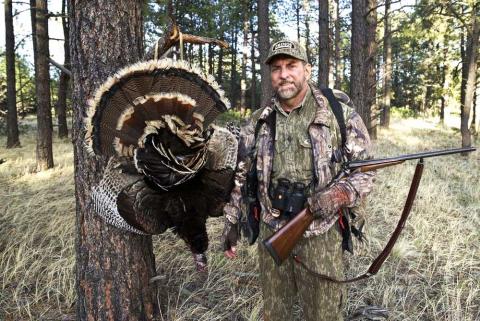Bob Humphrey | Originally published in GameKeepers: Farming for Wildlife Magazine. To subscribe, click here.
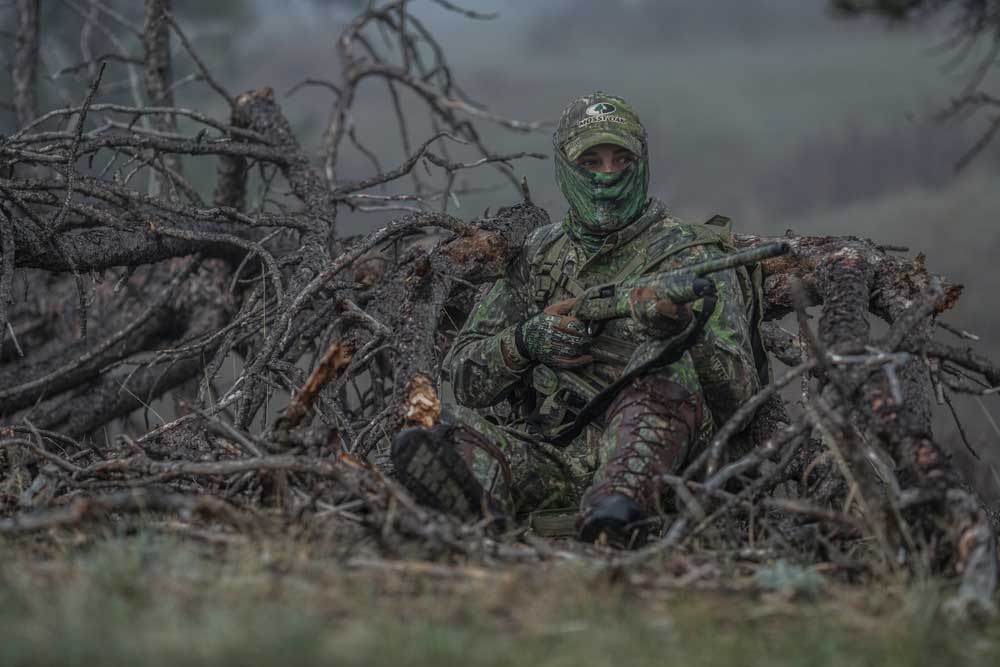
“Those who do not remember the past are condemned to repeat it,” or so says Santayana. No, not the guy from the Alamo, or Woodstock; Spanish philosopher Jorge (George) Agustín Nicolás Ruiz de Santayana y Borrás. That insightful observation has certainly stood the test of time, but I question whether it is necessarily a negative. Whether it is an homage to history or merely a convergence of human nature, repeating the past can sometimes be a very positive exercise, fall turkey hunting being a prime example.
Modern day, self-proclaimed turkey hunting “purists” might look down their collective noses at anyone who would lower themselves to “ambushing” a turkey in the fall. And to them, killing a hen turkey is a downright abomination. But before casting their stones of condemnation they’d be well advised to study the “scribes of yore,” from which they will learn that the seeds of turkey hunting first germinated in the fall, and that spring turkey hunting is a relatively new undertaking.
More knowledgeable Nimrods who have delved into the times of great authors like Archibald Rutledge and Tom Kelly claim the old-timers preferred fall hunting because it is more difficult to call in a wily old gobbler, and therefore more rewarding if and when you do so. That all sounds quite noble and romantic, but a far more credible explanation is simply that fall is the “season of harvest,” when all creatures great and small are stalked for their flavorful flesh.
Before there were bag limits and regulations, eons of living with, and taking the lives of wild creatures taught mankind the most practical and responsible time to harvest game animals was in the fall, when populations were at their greatest, but food resources would soon become scarce. Besides, who worthy of being called a hunter would stoop to hunt a game bird during its mating season?
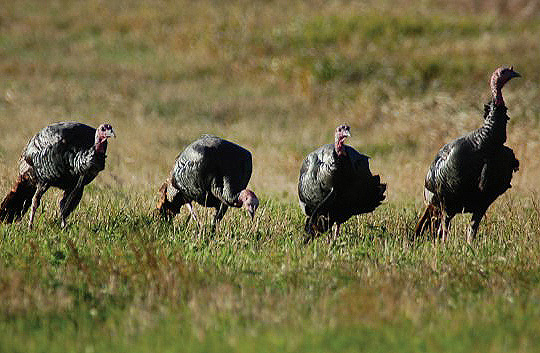
Methods
The very first fall turkey hunters did so more out of necessity, and so, quickly learned the most effective methods and applied them without limitation. It was then, and still is perfectly acceptable to slip along stealthily through the woods, much as you would when hunting grouse, woodcock, pheasant or quail, and then take a wing-shot as your quarry rises into flight. That technique is less practiced than others, largely because it’s not easy to sneak within gun or bow range of fall turkeys, and because it’s much harder to break down a turkey than one of its frailer feathered kin. Unlike those smaller game birds, a turkey with a broken wing can easily and quickly outdistance a man on its powerful legs.
During the fall, as in the spring, it is far more common and effective to lie in ambush and wait for a more precise shot, preferably to the head, to ensure a more reliable kill and to avoid damaging the delicious meat. But you could wait a long time for a turkey to wander by if you’re not in the right place.
Just like during the spring, scouting is key. Look and listen for birds; males don’t gobble as much but hens are far more vocal at dawn and dusk on the roost. Look for sign, like scratched up leaves, and find the food. That’s what turkeys are all about in the fall. Figure out where they’ve been feeding and the rest will come much more easily.
Breaking Bad

opportunity” by deer hunters. Here’s the author with
one taken with archery equipment.
The true essence of fall turkey increases the odds of the flock scattering in multiple directions rather than one, or the same general direction.
The actual process of flock busting is basic. You simply run at the flock as fast as you can. You can hoot, holler, bark like a dog or scream like a banshee if the spirit moves you. The old timers sometimes fired a shot or two in the air but I would strongly discourage the practice of running full-tilt through the woods with a loaded firearm. It’s unsafe and should someone else witness it you may have some creative explaining to do with the local game warden.
Bottom line, the more dispersed the flock, the more eager they will be to re-unite. Fall turkeys, especially females and young are very social. A hen and her poults have been together since birth, and by late summer these family groups have joined with others sometimes forming large flocks. They’re accustomed to one another and they don’t like being apart. This, like a spring gobbler’s lust, is their Achilles heel. All you have to do now is sit down at the break point and call them back.
Those new to the sport often ask how to call fall birds. That turns out to be another advantage to fall hunting because you’ll likely be taught pretty much everything you need to know about fall calling (hopefully) not long after the flock break. Just listen, then imitate.
You’re going to hear three general calls. The first is the kee-kee, which consists of a series of high-pitched whistles that sound like its name. This is the sound young birds make when separated from each other and their mother, and it could be three to five or more notes.
Like teenage boys going through puberty, a young bird’s voice may crack from the high-pitched kee-kee into a more familiar yelp in mid-sentence. This call is called the kee-kee-run, and it might go something like: kee-kee-kee-yelp-yelp-yelp.
Last, but by no means least, is the assembly call. This is the call a hen gives to re-assemble her feathered dependents. It’s essentially the same plain yelp you use in the spring but with a few or a lot more notes. Here again, the number of notes and volume you should use will depend largely on what you hear. The real hen is a familiar voice, and her entrusted are far more likely to go to her than you. To borrow another phrase from spring hunting, “take her temperature” and respond accordingly. You’ve got to be louder and more insistent than she is.
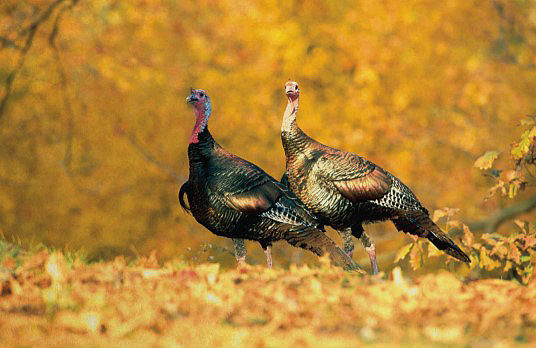
Patience is every bit as critical here as it is in the spring, though in a slightly different way. In the spring, you’ve made initial contact and then must wait while the leery longbeard slowly makes his way your way, perhaps pausing along that way to strut, or scan his surroundings to make sure all is clear.
Much of the waiting in fall hunting occurs after the break but before secondary contact is made. You bust the flock, settle in and because humans are naturally impatient, immediately begin calling, to no avail. Then 10, 15, 20 minutes pass without a sound and just about the time you begin to think the birds must have reassembled elsewhere and you’re ready to give up, you hear it. From the very limit of earshot comes the plaintive “kee-keekee-kee” of a lonely juvenile bird, quickly followed by another, and then by a mother, whose assembly yelps echo eerily through the woodlot. The game is on.
As in the spring, you want to try and position yourself for a shot. However, that task is far more difficult because rather than a single intended target coming from one direction you have a disassembled flock coming from hither and yon. You hear calling off to the left, and sidle around the tree to prepare for a shot. Then there’s calling just over your right shoulder, the bane of the right-handed shooter. You’re about to reposition again when you hear footfalls in the leaves behind you, then off to the right, followed by more kee-keeing to the left, right, front and back. Just hold still. With so many birds it’s only a matter of time before one unwittingly enters your shooting lane.
As a deer manager, I’m often asked, “Which is the right doe to shoot when trying to properly manage the herd.” There are some long answers, but the short answer is, “The one that offers you the best shot opportunity.” The same applies to fall turkeys.
You can try to hold out for a bigger bird if you like, but by fall hunting season, most poults are nearly as large as their mother hen anyway, so it’s sometimes tough to tell. Besides, for table fare, I’d rather remove a tender young roaster and leave the experienced mother to tend to her flock and still be around next spring to produce another.
In the fall, even more than in the spring, it’s a good idea to bring along a companion or two. It’s always more fun to share the experience, but it’s also fairly common to be able to take several birds from a single flock break. After the first bird is shot, simply sit tight and keep calling, and culling.
Boys
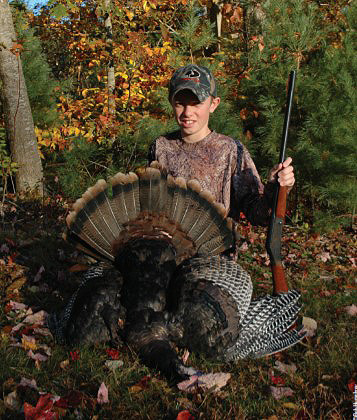
rising before dawn can make fall hunting more
appealing to youngsters.
Up to this point our discussion has focused primarily on females. Hunting fall males, especially long-beards, is an entirely different undertaking. Unlike the spring, they want little or nothing to do with the ladies. They associate with one another but are not nearly as concerned about being apart, which makes hunting them that much more challenging.
The preferred method used by most fall hunters targeting male birds is scouting and ambush. They’ll often cover more ground, but fall turkeys, if left undisturbed, tend to be more predictable in their daily routines. Pattern them, then get where they’re going before they do.
However, if you are one of those insatiable hunters who must take it to the next level, it is possible to break a flock of male birds and call them back. Busting is done in the same manner as with female family flocks. And re-calling is somewhat similar, but unless you’re just really lucky, it will take a level of patience you didn't know existed (unless you have children). It may take hours, or even days before the birds return to the break point, if they ever do.
In either case, your calling technique will be about the same. If you have much spring hunting experience you’ve no doubt heard, and are familiar with the “yelp” of a jake or a tom. If not, I suggest you watch some birds and learn, or find another source you can learn from. It’s similar to a hen but deeper, with a slower cadence and usually fewer notes. Rather than “kee-yawk, kee-yawk, kee-yawk” it’s more of a “chalk, chalk, chalk.” And because males tend to be far less vocal, you should use it sparingly. Let them know where you are, then shut up and wait.
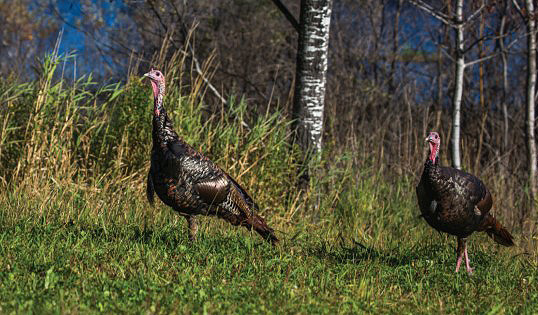
Cold Calling
There is yet another method that, though less productive, does occasionally work and applies to both sexes. That’s “cold calling,” or calling without a break. You simply set up and call. For obvious reasons it’s more productive in areas with lots of sign, and where you have seen birds recently. And it’s even more effective if you can see or hear birds. For hen-poult flocks simply use the same kee-kees and assembly yelps, or a lost hen yelp, which is essentially a less emphatic assembly call.
Calling males is about the same whether you’ve busted a flock or not, with one notable exception. Males, especially jakes, spend considerable time and effort sorting out the dominance hierarchy or, quite literally, the “pecking order,” amongst themselves in the fall. Now, even more so than in the spring, fighting purrs can be a lethal calling method. Don’t be afraid to rustle the leaves and snap a few twigs. I even carry a turkey wing in my vest that I use to slap trees and branches.
Decoys
It’s worth mentioning a word or two about turkey hunting with decoys. While I typically don’t use them in the fall because of the way I hunt, they are effective. Again, turkeys are social birds, particularly in the fall, and therefore more likely to go toward something they perceive as another turkey. Set up appropriately for your intended quarry and the area you’re hunting. If you’re targeting hens, use hen decoys. If you want males, use the appropriate age male decoys, jakes or toms. And if you’re setting up in an open area, use more decoys.
Summary
That covers much of the basics. Every situation is unique and you may have to adapt accordingly. There’s a bit of a learning curve but there are far more similarities than differences between spring and fall hunting so if you’re already a spring hunter, the process will be much easier. The biggest difference, at least in my humble opinion, is that fall hunting is more relaxed. There’s less hunting pressure, less competition and less at stake. If you mess up on your flock break, go find another one, and another and another. Keep trying until you get it right because sometimes repeating history is not such a bad thing.















